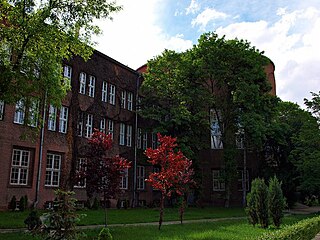Related Research Articles

Sofia is the capital and largest city of Bulgaria. It is situated in the Sofia Valley at the foot of the Vitosha mountain in the western parts of the country. The city is built west of the Iskar river, and has many mineral springs, such as the Sofia Central Mineral Baths. It has a humid continental climate. Being in the centre of the Balkans, it is midway between the Black Sea and the Adriatic Sea, and closest to the Aegean Sea.

Plovdiv is the second-largest city in Bulgaria, standing on the banks of the Maritsa river in the historical region of Thrace, behind the state capital Sofia. It has a population of 346,893 as of 2018 and 675,000 in the greater metropolitan area. Plovdiv is a cultural hub in Bulgaria and was the European Capital of Culture in 2019. The city is an important economic, transport, cultural, and educational center. Plovdiv joined the UNESCO Global Network of Learning Cities in 2016.

The provinces of Bulgaria are the first-level administrative subdivisions of the country.

Bankya is a small town located on the outskirts of Sofia in western Bulgaria. It is administratively part of Greater Sofia.
Balchik is a Black Sea coastal town and seaside resort in the Southern Dobruja area of northeastern Bulgaria. It is in Dobrich Province, 35 km southeast of Dobrich and 42 km northeast of Varna. It sprawls scenically along hilly terraces descending from the Dobruja plateau to the sea, and is often called "The White City" because of its white hills.

Poduyane or Poduene is a residential complex and a district of Sofia, the capital of Bulgaria with 85,996 inhabitants. It is located in the northeastern outskirts of the city and is divided into microregions. Poduyane consists of the neighbourhoods Suhata Reka, Hadzhi Dimitar, Poduyane, Stefan Karadzha, Levski, Levski-G, Levski-V. A former village, it was incoroparted in 1895. The district's holiday is celebrated on 1 June.

Novi Iskar is a town in Western Bulgaria, located in Sofia City Province, which is a part of the Municipality of Sofia. It is often regarded as a northern suburb of Bulgarian capital Sofia and lies in the northern part of the Sofia Valley, with the Iskar Gorge beginning just north of the town.
Vitosha is one of the 24 districts of Sofia, situated in the southern parts of the City on the foot of the Vitosha mountain. As of 2006 it has 42,953 inhabitants. The district includes 7 neighbourhoods: Boyana; Simeonovo; Dragalevtsi; Pavlovo; Buxton; Manastirski Livadi and Knyazhevo as well as two villages Vladaya and Marchaevo. It is among the richest and greenest districts in Sofia and Bulgaria with many beautiful residences, houses, villas and residential complexes.
Mladost is a district of Sofia. It is one of the most modern and fast developing areas in the city. As of 2012 it has 114,887 inhabitants which makes it the second-most-populous district in the capital, situated in the south-east end of Sofia, between Druzhba and Vitosha mountain. The largest business complex in Bulgaria is situated in the south end: Business Park Sofia. Mladost is among the safest and cleanest districts of Sofia. In May 2011 it became one of the first neighbourhoods of Sofia to have a complete cycling route of more than 8 km.

Lozenets, sometimes transliterated as Lozenetz or Lozenec, is a district and residential area located in the southern parts of Sofia, Bulgaria. As of 2012 it has 49,200 inhabitants.
Slatina is a district located in the eastern parts of the capital Sofia. As of 2006 it has 65,772 inhabitants. The district has an area of 13.25 km² which counts for 6.69% of the total Capital Municipality area. It is a flat country with some heights to the west.
Sredets is a district located in the very centre of the capital Sofia. As of 2006 it has 41,000 inhabitants. The district has an area of around 300 hectares or 3 km2.

Chiprovtsi Municipality is a small frontier municipality (obshtina) in Montana Province, Northwestern Bulgaria, located on the northern slopes of western Stara Planina mountain and the area of the so-called Fore-Balkan. It is named after its administrative centre - the town of Chiprovtsi. In the southwest, the municipality borders on Republic of Serbia.

The first round of the local elections for mayors and municipal councilors on both the local and provincial level in Bulgaria were held on 27 October 2019. The second round of the election took place on 3 November, as per the decree signed by the President of Bulgaria. 6,227,901 Bulgarians were included on the voter lists and were eligible to vote, a 136,000 voter reduction compared to the 2015 local elections.
References
- 1 2 "District Mayors". Sofia Municipality. Archived from the original on 2009-12-20. Retrieved 2009-12-26.
- ↑ София в числа, НСИ, 2003